Getting in Touch with the Lost Mayan Culture
2021/11/5
The Yucatan Peninsula (Mexico)
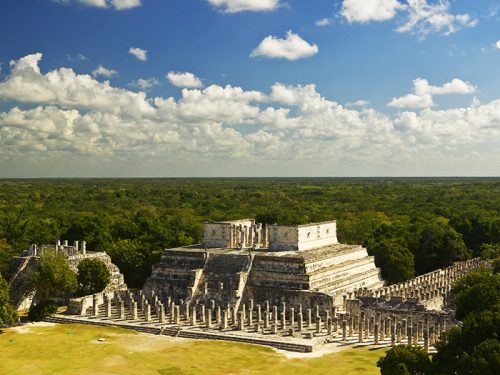
Mexico has a landmass five times that of Japan .It borders the US to the north, Guatemala and Belize to the south, and faces the Pacific Ocean to the west. With such an extensive territory, it has a wide diversity of ecosystems that range from chilly deserts to humid jungles, each providing a different impression of Mexico. One of the most popular spots in Mexico is the Yucatan Peninsula, located in the southeastern part of the country by the Caribbean Sea. Here you can find countless turquoise blue natural springs, and mystic Mayan ruins that include Chichen Itza; one of the biggest Mayan archeological complexes.
The Mystic Springs Connecting Life
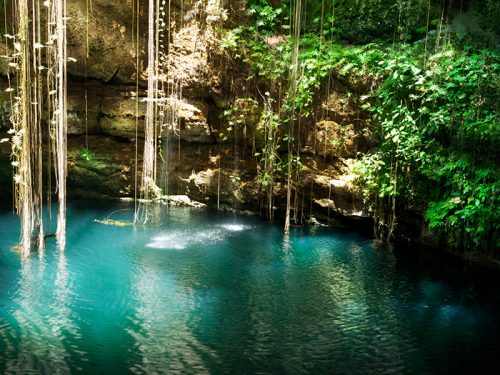
For every civilization that flourished in the past, there has been a river to support and connect the life of its people. However, for the people that settled in the Yucatan Peninsula it was different, as there are no rivers nor mountains here. So how did they manage to get their water? The key for this was the limestone base on which the Yucatan Peninsula formed. Once rains falls, it permeates into the underground rivers, piling up into the holes in the limestone. These holes became the lifeline of the people living in the Yucatan Peninsula, the mystic Cenotes.
Getting in touch with the Mexican Culture through Street Stalls
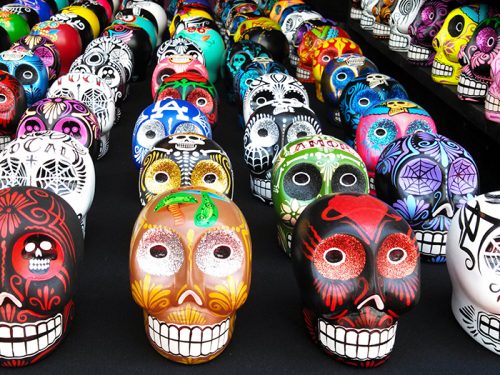
When traveling around the Yucatan Peninsula, you are bound to come across many different street stalls. Be it small and colourful kitchenware, hammocks, wide sombreros, traditional Mayan clothes huipil, or tequila, these stalls have a wide variety of goods lined up. With all of these symbolic souvenirs from Mexico, you wallet may feel lighter by the end of the day! However, from all of these souvenirs, the ones that stand out the most are the colorfoul skeleton figures. Mexico celebrates the Day of the Dead on November 1 and 2, and during this festivity you can see how Mexican people rember with joy their loved ones who have passed on. It is interesting that while we may often think of skulls and bones as something creepy, painting them with vivid colors makes their impression change drastically.
Taste Yucatan’s food, a Mayan Legacy
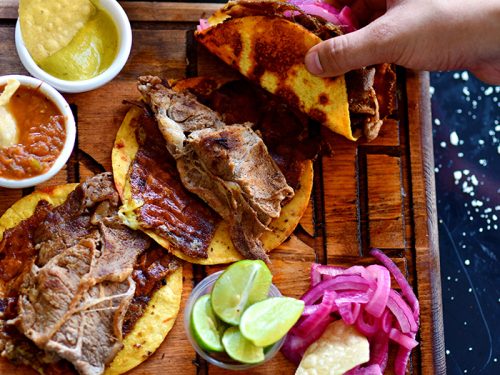
Refering to the corn tortilla as Mexico’s soul food is not an exageration. Being thinner than bread, you will see them on the table with all sorts of dishes. It is interesting that what you put on top of the tortilla changes depending on the region. In Yucatan, one of the most popular dishes is the Cochinita Pibil, a dish with Mayan roots. To prepare it, you need to prepare the pork with a range of spices, wrap it in many banana leaves, and bury it underground, cooking using the heat in the earth.The result is surprisngly soft meat, with a deep flavor enhanced by the tortillas. Eating this along with the local favorite beer “Montejo” is like an otherworldly pleasure!
Chichen Itza: Testament of High Knowledge
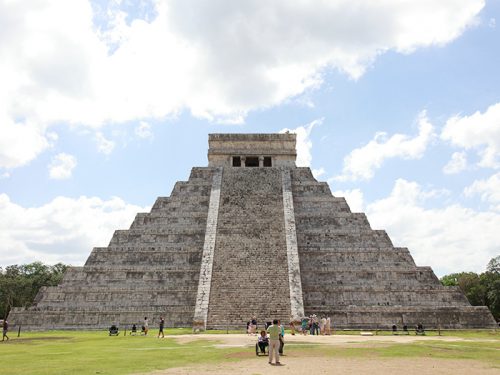
One of the most amazing highlights of the Yucatan Peninsula is the archeological complex of Chicen Itza. Traveling through the jungle’s bumpy roads by bus, the ruins suddenly appear out of the dense vegetation. As soon as you get off the busy you will be surprised to see how many street vendors there are. The first stop is Chichen Itza’s symbol: El Castillo. A few minutes after starting to walk, it will begin to emerge from the horizon. El Castillo has four sets of stairs, each facing a cardinal point and with a total of 91 steps. If you add the temple at the top of El Castillo, there is a total of 365 levels (91*4=364, +1=365), one step per day of the Maya calendar.
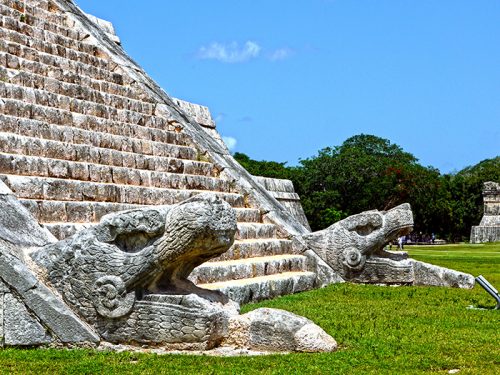
Gazing at the Castillo in front, you will be surprised by the high degree of architectural skill used to built it. This pyramid has many more charms than those which meet the eye at first. One such charm is known as the descent of Kukulcan, a phenomenon that happens only during the spring and autumn equinoxes. As the sun goes to the west, the part of the pyramid illuminated by light floats up as if the body of a serpent, merging with the stone snake heads at the bottom of the Castillo’s northern stairs. This leads to the appearance of the god of agriculture, Kukulcan. This phenomena can only be seen twice a year, and its appearance relies on the shining of the sun. Learning about such history and the complex knowledge of the Mayan people will amaze you.
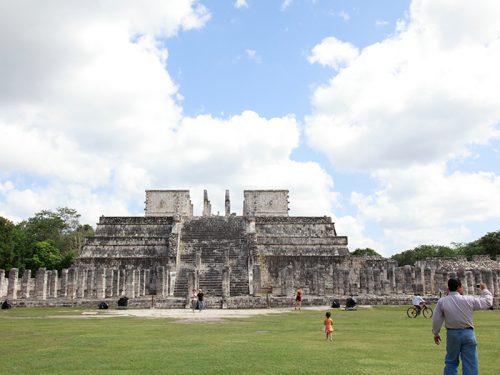
Our guide, standing in front of the Castillo’s northern stair, tells us to clap our hands. The sound that echoes back from the temple on top of the pyramid is similar to that of a bird’s song. Moreover, by clapping your hands in the Ballcourt next to the Castillo, you can hear the sound resonate seven times. And if you raise your voice from the temple on the north of the court, your voice can be heard by the audience in its south area, a long way away. These are not coincidences, but meticulously calculated acoustic designs created by the Mayan people. Other ruins, such as an observatory that proves the existence of advanced astronomy, ad a warrior temple used for sacrificial rituals, will also satisfy your intellectual curiosity.
PHOTO: PEACEBOAT, Chiga Kenji, AdobeStock, shutterstock.com
